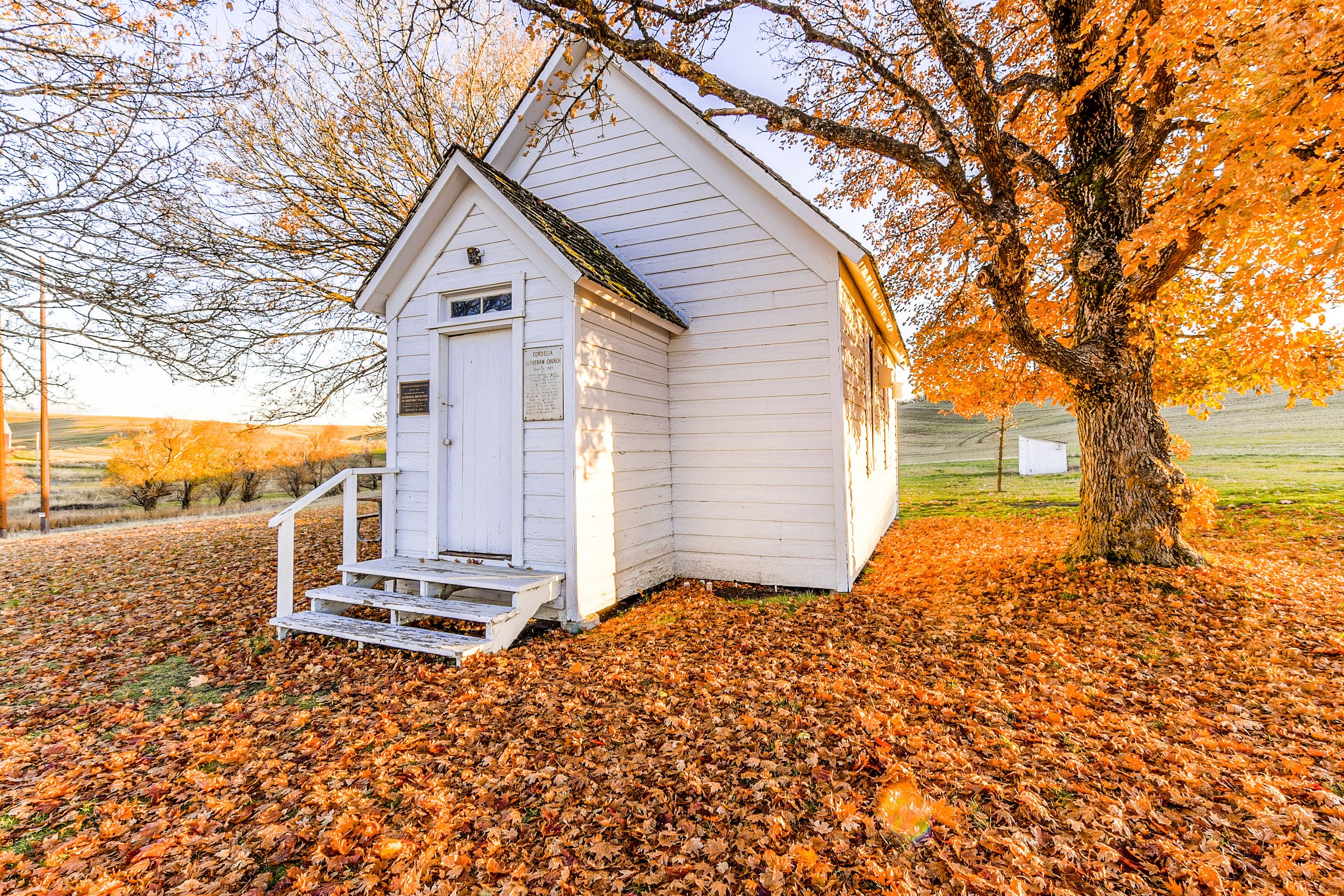Cordelia Lutheran Church
Written by Kayte Casebolt
Photo: Greta Sentz
Cordelia Lutheran Church is the smallest Lutheran church in Idaho with an area of eighteen by twenty four feet. But its size isn’t the only reason it was added to the National Register of Historical Places in 1995. The Cordelia Chapel represents a rich history of Swedish immigrants to the area and the religious values that they brought with them. Swedish immigration reached its peak in the 1880’s as over fifty thousand Swedes made the journey to America per year. Within Idaho, nineteen percent of the Swedish population settled down in Latah County.
Peter J. Carlson, a Swedish carpenter, designed and built thirteen churches in the Pacific Northwest, and contributed in part to the construction of many other churches between 1879 and 1898. In 1883, seven years before Idaho became a state, Carlson came to Lenville, Idaho and constructed the Cordelia Lutheran Church. With a construction material cost of $72.83, Carlson built the church in the Greek revival design, very similar to the first Pacific Northwest church he designed in Astoria, Oregon. Later he built churches in Moscow and Troy, too. His work both as a carpenter and a minister was made possible thanks to the Swedish Lutheran Augustana Synod in Wisconsin, who sent him westward confident that he would be just as successful in his work as he had been in Wisconsin. Carlson became known as the “Apostle to the West,” although he eventually moved to Nebraska in 1898 to fill a chaplain position.
Andrew S. Olsen, one of the first members of the Cordelia congregation, donated the land on which the church was built. The church then bought another acre from Olsen for twenty five dollars to use as a cemetery. With conflicting reports, it is uncertain if the cemetery was made at the same time the church was constructed or at a later date, but thanks to the inscriptions on the tombstones we know it must have been there by 1890. There are only five gravesites, the latest being 1912. Several gravesites were moved when the Cordelia church services ceased.
As the years went by, regular church attendance dwindled, and by 1903 there was only one family in membership. Services eventually ceased sometime between 1913 and 1920. The church was abandoned for several decades afterwards. Cordelia’s prospects looked grim — it would likely be sold and eventually torn down. But in May of 1948, Olsen’s daughter, Frances Olsen Graham, donated funds for its restoration. The interior was cleaned, the wallpaper was replaced, and another two pews were squeezed into the small space.
Again, the church fell into disuse despite the upgrades, and it wasn’t until Troy Westdala Lutheran Church started raising funds in 1979 that it got the repairs it needed. However, they decided to end fundraising in 1989 and once more it looked like the church would be sold and possibly moved. But Michael Houser came to the rescue in 1992, creating the Friends of Cordelia Committee in order to preserve this historically significant church. From 1979 to 1995, these two groups added concrete piers, new floors, exterior paint, and more.
Additionally, Troy Lutheran took charge of clearing Cordelia’s title because it turned out that the church wasn’t built on property belonging to Olsen. The church was just twenty feet shy of his property line. Although they thought about moving the church, this proposal was withdrawn. Instead the Pacific Northwest Synod arranged for an exchange with Mr. Meyer, the true owner of the property. The title then transferred from the Pacific Northwest Synod to the Emmanuel Lutheran Church in Moscow. Today, it is still under the possession of Emmanuel Lutheran and is occasionally used for weddings and other festivities.
While many places have their ups and downs, Cordelia Lutheran Church seems to favor the downside. But although it may be small and without church services for over a century, it marks a notable period in the history of Idaho. In many ways it resembles the perseverance of the Swedish immigrants. Although they faced many trials as they moved away from their beloved homes, they found hope in their new life here in Idaho. From the hard work of Peter Carlson to the generosity of Andrew Carlson and his family to the dedicated efforts of Michael Houser, Cordelia Chapel represents the lives of many who overcame whatever difficulties came their way.
